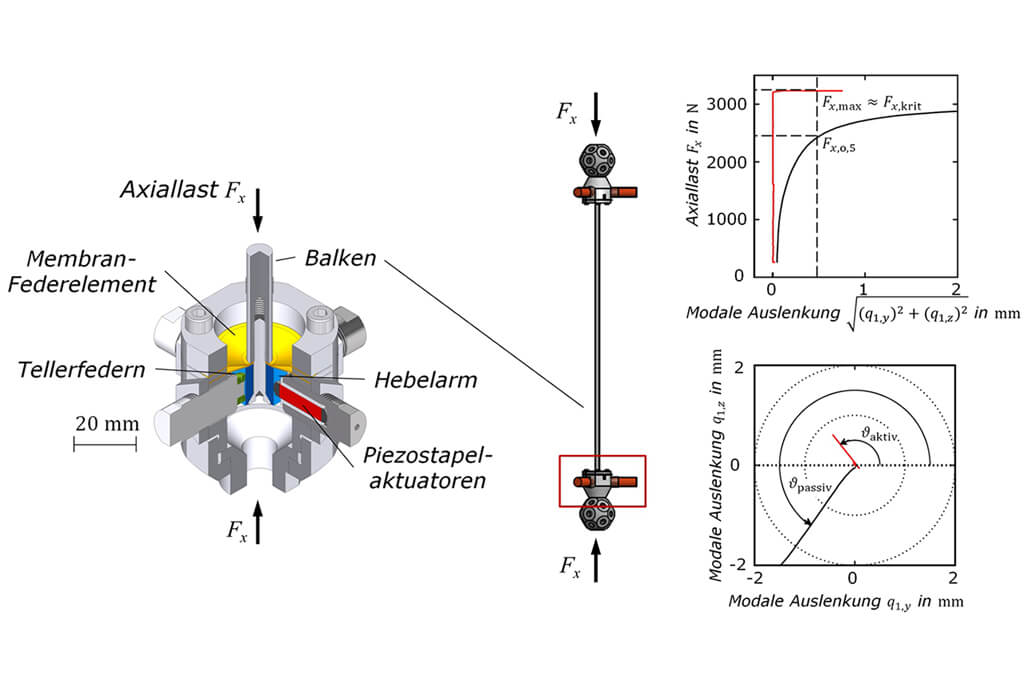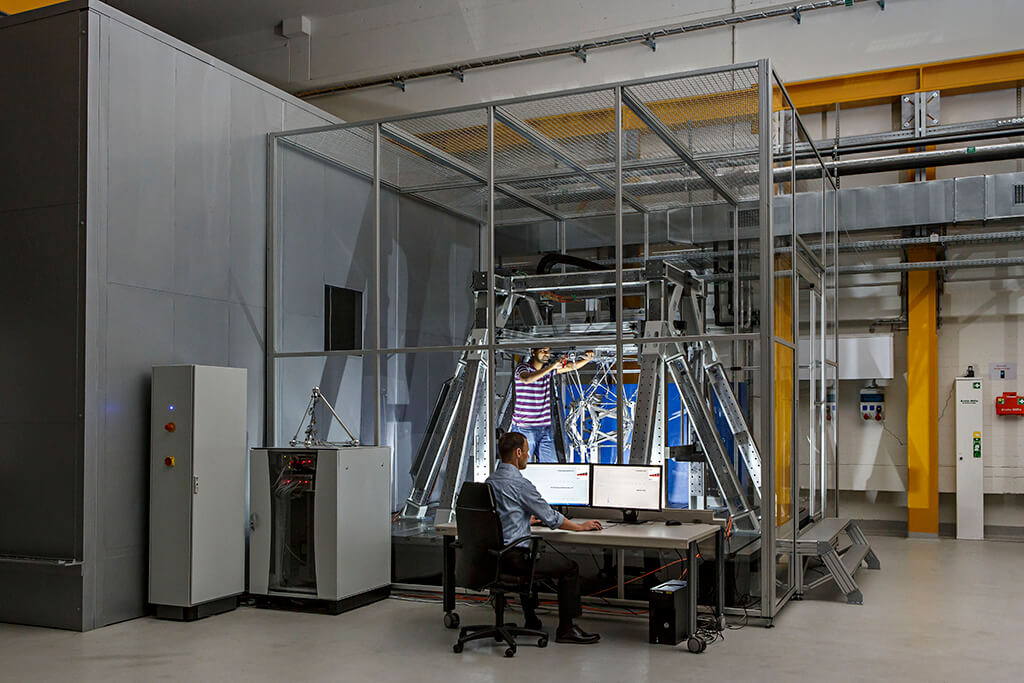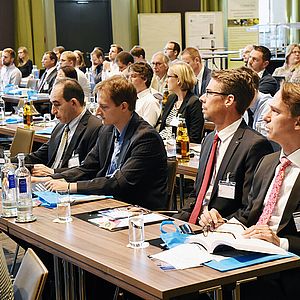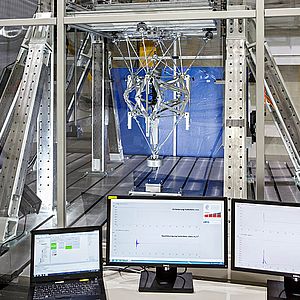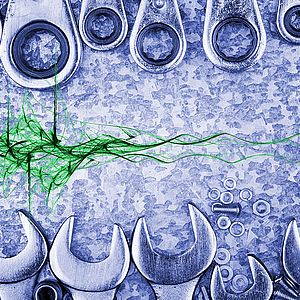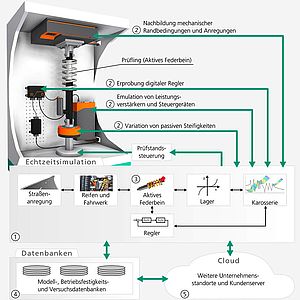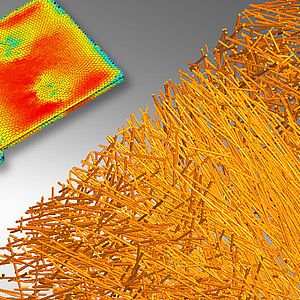Controlling uncertainty in load-carrying structures
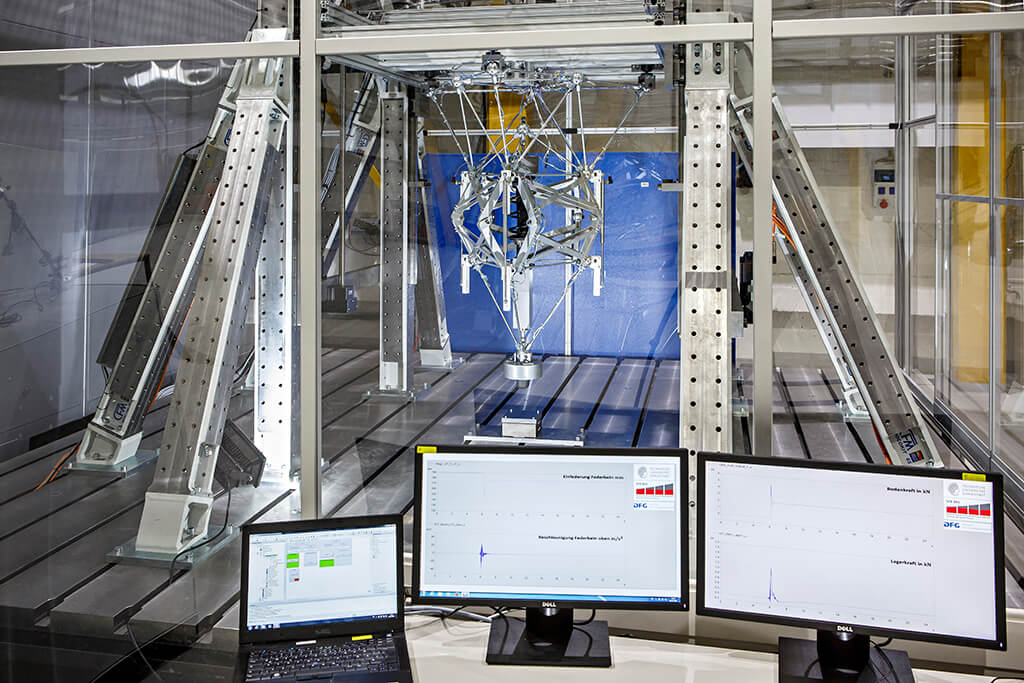
Fraunhofer LBF is a cooperation partner in the Collaborative Research Center 805 - “Control of Uncertainty in Load-Carrying Structures in Mechanical Engineering”, which is funded by the DFG and located at TU Darmstadt. Fraunhofer LBF works hand in hand with research specialists in System Reliability, Adaptive Structures, and Machine Acoustics (SAM) to develop fundamental solutions for active and adaptive stabilization and vibration damping in individual beams in support structures and hence prevent buckling as well as redirect loads past endangered or damaged components. Here, we use innovative piezo-elastic support systems that actively stabilize beams through integrated piezoelectric actuators (Fig. 1) as well as help suppress vibrations through interconnection of the piezoelectric transducer to a shunt resistor.
Central demonstrator reveals diverse solution approaches
These solutions are part of several approaches for controlling uncertainties in the research center’s (SFB 805) central demonstrator (Fig. 2). The SFB demonstrator is made up of a virtual and a real part. The real part consists of the modular active spring damper system. This uses a passive, semi-active, or active spring damper system as a pendulum support, which is hinged between an upper and lower support structure. Joint modules enable the kinematic connection between the upper and lower support structure and help absorb transverse loads and moments. The support structures are fitted with passive and active elements such as the piezoelastic mount system: the piezo-elastic support. The modular active spring damper system is optimized for requirements similar to those of an aircraft landing gear. For instance, drop tests are conducted to investigate and quantify the uncertainty when predicting the resilience and load capacity in individual components in order to help control this uncertainty using any necessary active measures.
Fraunhofer LBF offers the complete infrastructure by providing the space and energy needed for scientific studies on the real part of the modular active spring damper system. This serves to underline the excellent cooperation with TU Darmstadt as well as the scientific commitment in fundamental research for further development of lightweight structures.
Numerous publications at scientific conferences and in journals serve as additional evidence of the scientific excellence of Fraunhofer LBF in this field. The results and knowledge gained from the successful cooperation within the framework of the Collaborative Research Center 805 flow directly into the application-oriented research projects to benefit our customers from the industry.
Contact
- Dr.-Ing. Roland Platz
- Phone: +49 6151 705-288
- roland.platz@lbf.fraunhofer.de
